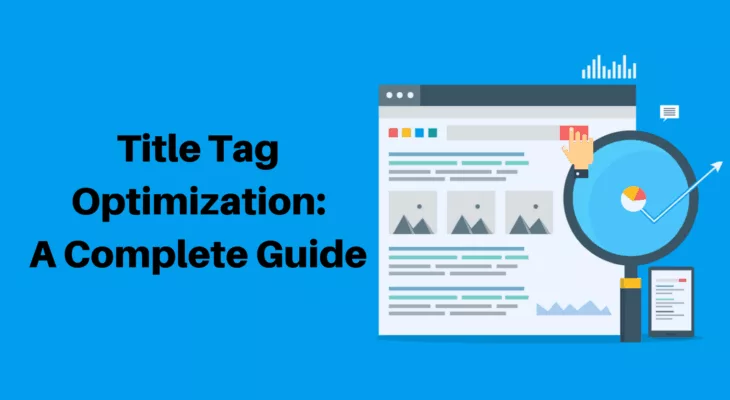Single Blog

How to Craft Page Title Tags for Better Ranking?
- Nilesh Shirke
- August 16, 2019
- 0 Comments
Ask any SEO expert, you will know the importance of Title Tag. Title Tag is the first thing users look into search results. It is also an important factor because Google uses it to determine the topic of the page. Search engine results display the title tags, HTML title tag, as clickable links for a given result and are important for usability and SEO. Title tags are used in three places like search engine results page, web browsers, and social networks. It is assumed that the title tag of a web page is accurate and describes the page content well. Google search engine generally displays a title tag with some limitations and hence keeping the title under the limit helps to display the tag correctly in a search engine.

What are Title Tags?
Title tag belongs to Head section-specifying title of the webpage. It appears in the headline in the SERP and on social networks. Google usually displays 50-60 characters of the title tag title tags has to be clear in all sense to provide complete idea about the idea behind the content.
Below are some of the ways to optimize the title tags for better SEO and user experience :
1. Title Length
If the title is way too long, google search engine may cut it off to a prescribed length of 60 characters or 600-pixel container whichever is lowest. The best practice is to avoid all capital letters in the title of the page. All capital titles are hard to read and take more space on the display. It also depends on the search engine to display the title and suffix with ellipse “…”. Though longer titles may work for social sharing it’s good to be mindful to be how the title appears in search engine.
2. SEO keywords
The rule is not to do SEO keywords overdo in the title. There is no restriction in google for long titles, but overdoing the SEO keywords may result in bad user experience. The best practice is to avoid titles that are just a list of keywords or repeated variations of the keywords as a google search engine understands the variation of the keywords.
3. Unique Page Title
Assigning unique title for each page helps search engine to understand the uniqueness of the content for each page, resulting in higher click rates. It may seem impossible to craft a unique title for each page, but CMS and code-based templates facilitate, unique titles for almost every important page of the website. The best practice is to avoid titles like “Home”, “New Page”, “Product Page” etc.
4. Important Keywords
Some user study experience has shown that people scan two initial words of the headline. The best practice is to have keywords closer to the beginning of the title and these keywords have more impact on search engine results.
5. Branding
In case of a well-established brand, adding the brand name in the title of the page may help to increase the click rate. The best practice is to add the brand name at the end of the title except for home page or about page where the brand focus is required. Google may automatically add the brand name to the title, so keep an eye on search engine results.
6. Customers First
The focus while writing a title tag is on the customer. The best practice is to focus on user experience as well as optimization and keyword usage. The title tag must convey positive and accurate message possible.
With all the best practices mentioned above, title tags are not complicated; they just take a bit of effort and time. Aim to continuously test and improve. To get the most of your web page, never neglect small things like Title Tags to get a bigger picture. Such small changes can help in improving user experience and bring more traffic.
